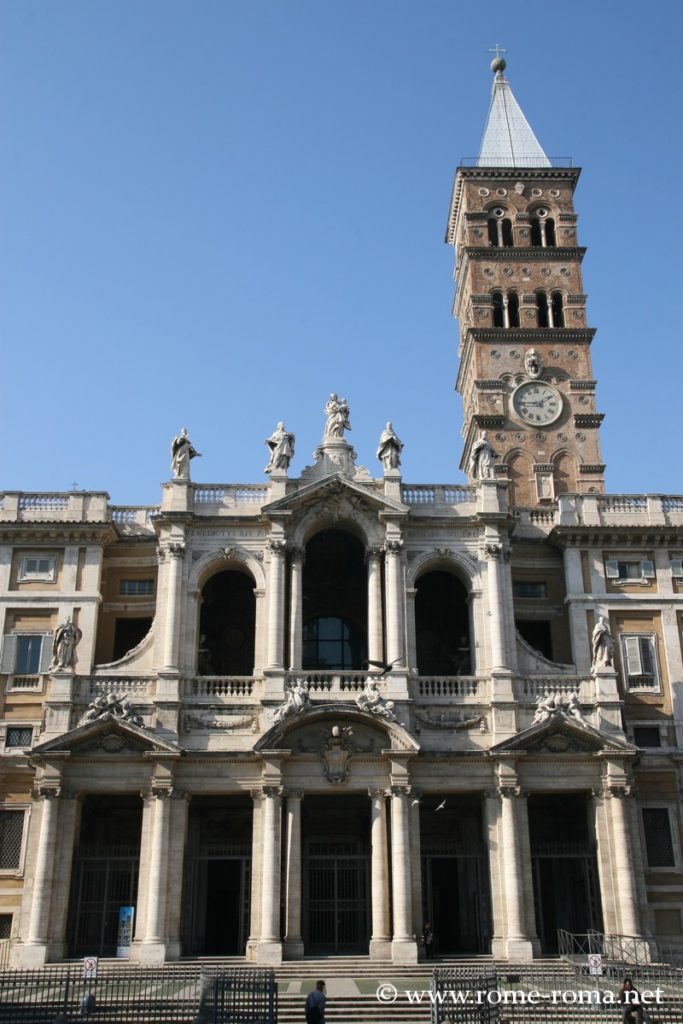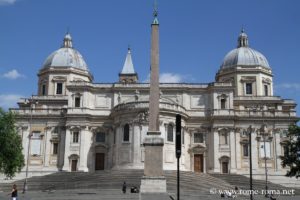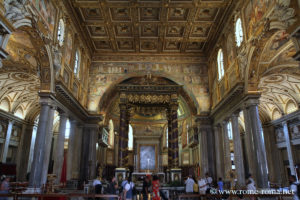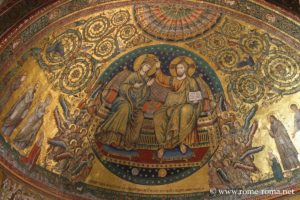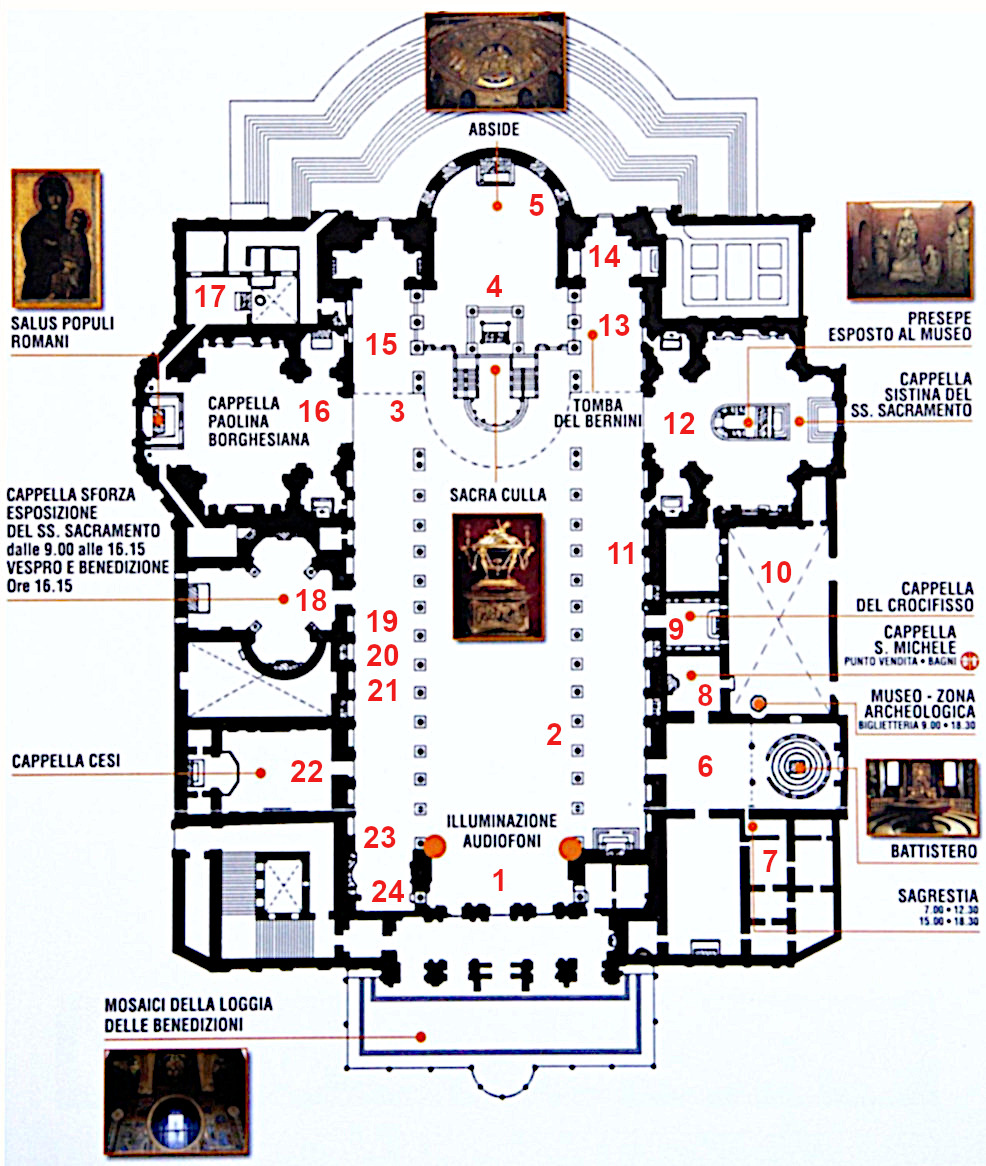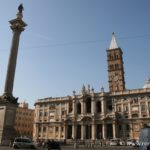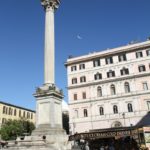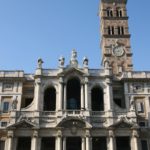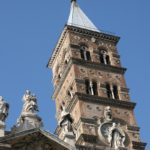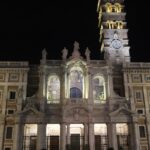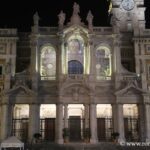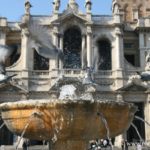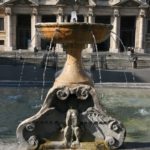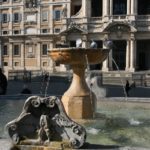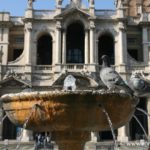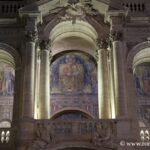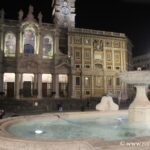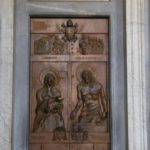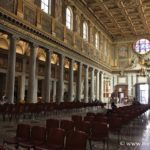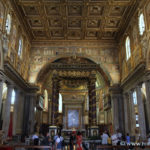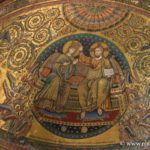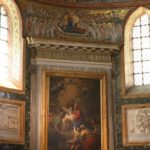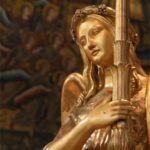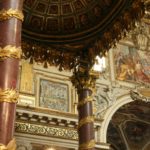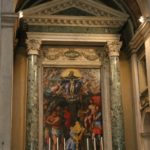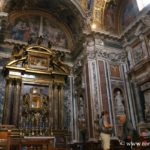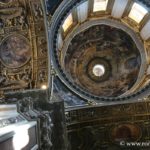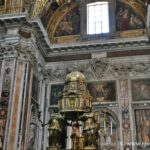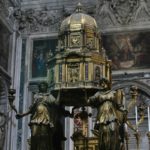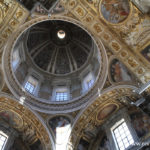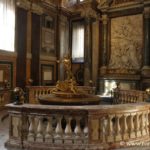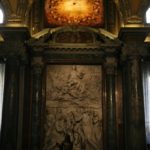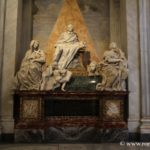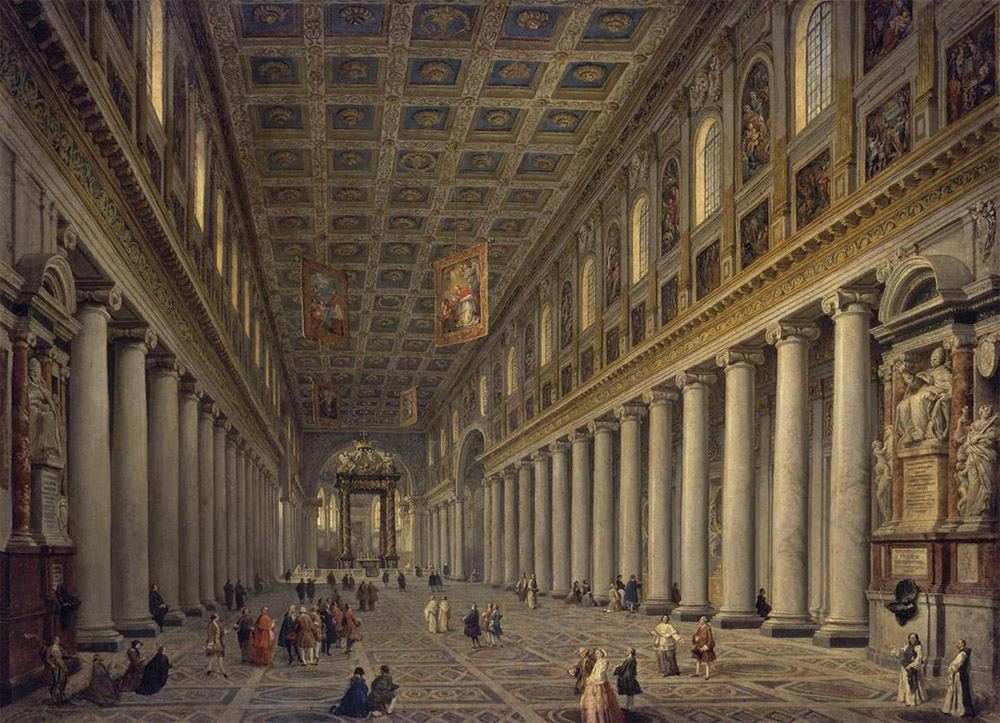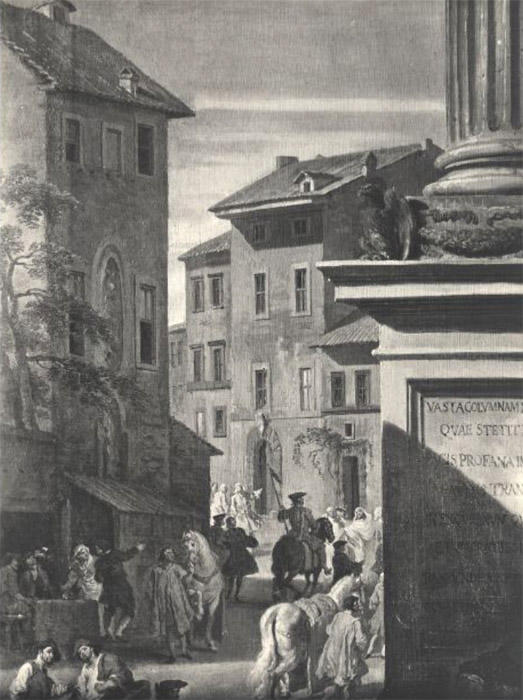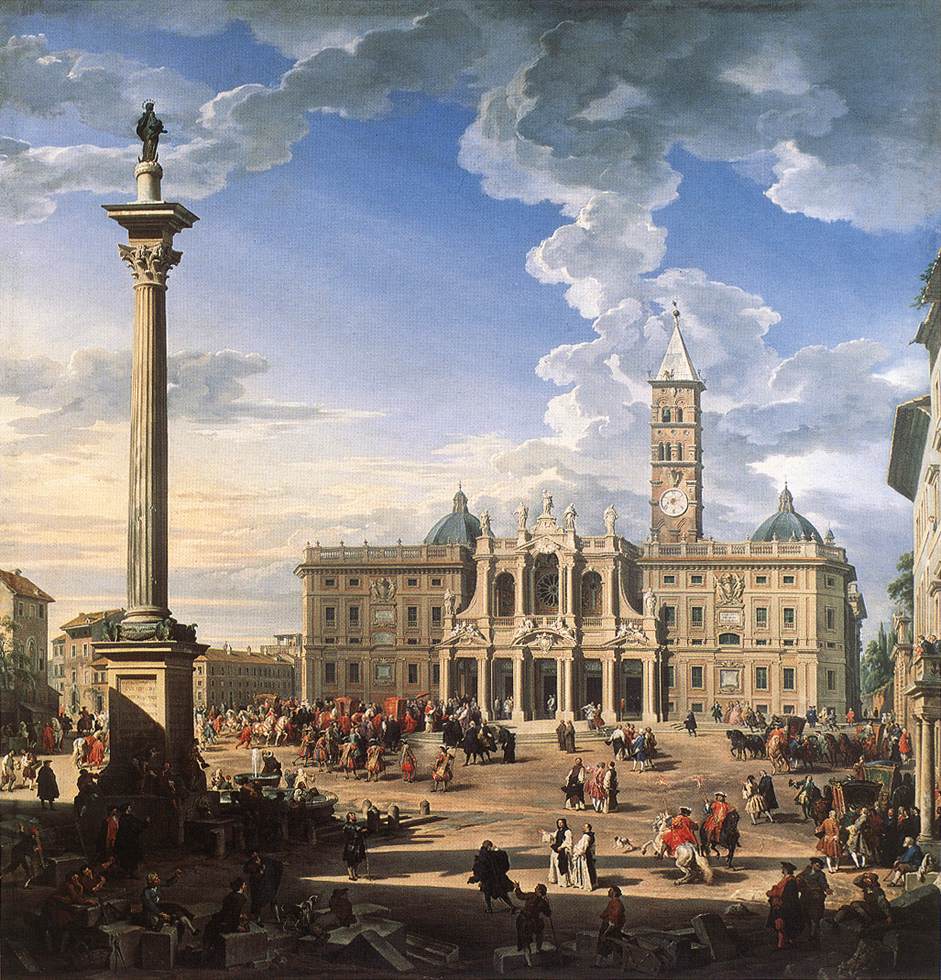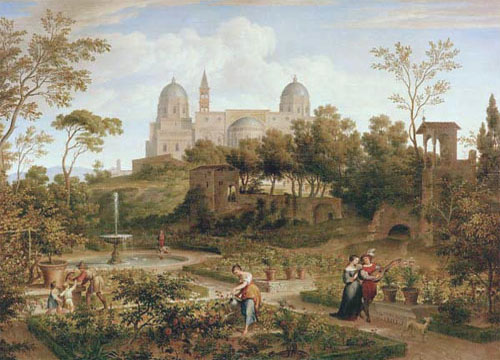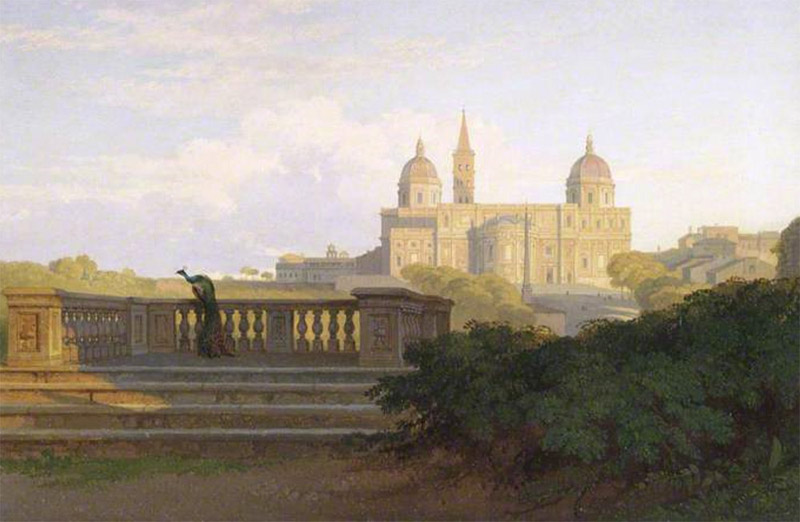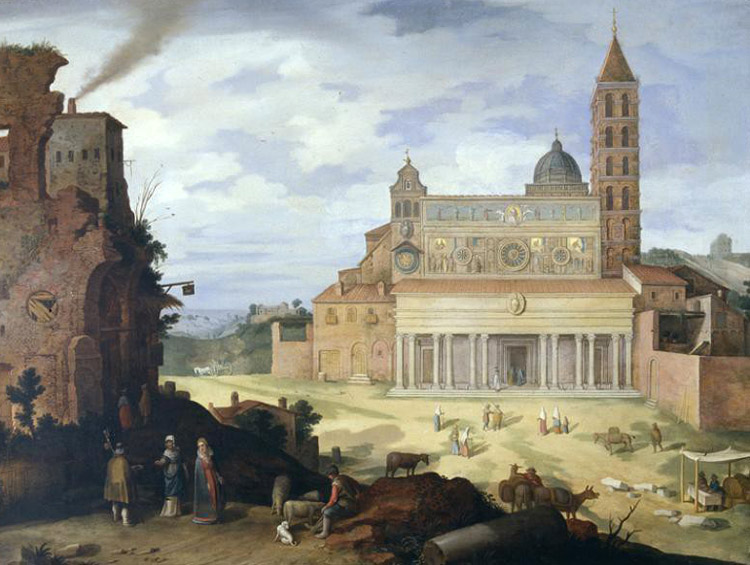One of the four papal basilicas, Santa Maria Maggiore is also the first and largest church in Rome dedicated to the Virgin Mary.
The building is a marvel of art and architecture. It is notable for its balance between constructions from different periods. Its original structure belongs to the first Christian basilicas, and mosaics date back to the 5th century; enhancements to the apse and mosaics are from the Middle Ages, as are the pavement and the large bell tower; and there are exceptional Baroque elements in the chapels and the façade.
On the square in front of the church, the Column of Peace was installed here in 1613. It was originally located in the Roman basilica of Maxentius and Constantine on the Roman Forum. It is crowned by a Virgin and Child created by Berthelot in 1611.
On the other side, opposite the apse, the Piazza dell’Esquilino features a large obelisk erected in 1587, which originally adorned the entrance to the Mausoleum of Augustus.
Historical Overview and Legend
The church was founded atop the Cispio, the highest of the hills forming the Esquiline, on the remains of a complex from the Augustan period.
It was built under Pope Sixtus III after the Ecumenical Council of Ephesus in 431, during which the dogma of the divine motherhood was recognized.
Thus, the first basilica founded between 432 and 440 had three naves, as in the current configuration, but without a transept, and with a narthex preceding the nave.
In the 12th century, under Pope Eugene III, the narthex was reduced to a portico and the Cosmatesque floor was installed.
During the pontificate of Nicholas IV at the end of the 13th century, the transept was constructed and decorated with paintings. A new apse was erected, adorned with mosaics by Jacopo Torriti around 1295, including for the first time a coronation of the Virgin.
The large bell tower was built around 1375, later completed by Cardinal Eugenio d’Estouteville, archpriest of the basilica from 1445 to 1484. He also designed the vaults of the side naves and the Chapel of Saint Michael.
At the end of the 15th century, Pope Alexander VI Borgia covered the central nave ceiling with the current remarkable coffered ceiling.
Current Architecture of the Basilica
The basilica is a combination of architectural styles from different periods, such as the nave with its ancient Ionic columns, the 5th-century early Christian sanctuary, the medieval Romanesque bell tower, the Renaissance ceilings, and the Baroque domes.
The bell tower, which reaches 75 meters (14th–15th centuries), is the tallest in Rome.
It retained its medieval character until the end of the 16th century when it was significantly transformed under Popes Sixtus V and Paul V, who notably built the two large side chapels (the Sistine Chapel and Pauline Chapel) as well as the extension on the right side of the façade.
The current appearance of the apse dates from the work of Carlo Rainaldi, who redesigned it between 1670 and 1676.
The interior of the church is close to its original aspect, with a large nave separated from two side naves by ancient columns, leading to the triumphal arch and the apse.
The last major transformations date from the first half of the 18th century by the Florentine architect Ferdinand Fuga, with the reconstruction of the façade and the construction of the palace located to its left. This façade is one of the finest examples of Roman Baroque. It overlays the previous façade, now forming the wall of the Loggia of the Blessing (accessible via stairs under the portico), where the mosaics decorating it can be admired. These mosaics are the work of Filippo Rosuti from the late 13th century. They depict in the upper register Christ blessing with the symbols of the Evangelists, the Virgin, and the saints, while the lower register illustrates episodes from the life of Pope Liberius.
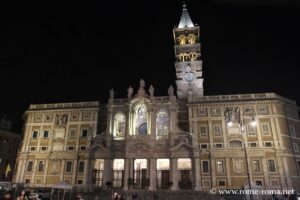
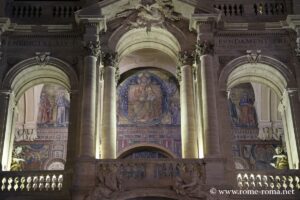
Notable Works and Chapels
The coffered ceiling dates back to Alexander VI Borgia (1492-1503). According to tradition, it was decorated with gold from the first expedition to America, a gift from Queen Isabella of Spain.
From the right nave, one can access the baptistery designed by Flaminio Ponzio in 1605 and decorated by Passignano, then from there to the sacristy and the St. Michael Chapel, where fragments of frescoes are attributed to Piero della Francesca.
After the small relics chapel remodeled by Ferdinando Fuga with 10 red porphyry columns, the large Sistine Chapel (1584-1587) was commissioned by Pope Sixtus V Peretti to Domenico Fontana. It was entirely painted by artists of the late Roman Mannerism under the direction of Cesare Nebbia and Giovanni Guerra. A staircase leads down to the chapel of the former Oratory of the Nativity, where 13th-century sculptures are largely by Arnolfo di Cambio.
On the floor outside the chapel, a simple tombstone of the Bernini family marks the burial place of the artist Gian Lorenzo (the famous Bernini).
In the transept, round frescoes featuring the figures of prophets can be seen, revealed during works in 1931, variously attributed to Cavallini, Cimabue, and the young Giotto.
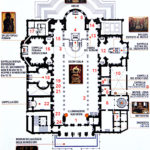
See also further down Visit and Photos
Facing the Sistine Chapel in the left nave is the magnificent Pauline Chapel, designed by Flaminio Ponzio under Paul V Borghese (1605-1621), with high-quality paintings, works by the Cavalier d’Arpino or Guido Reni.
In the basement of the Pauline Chapel are buried members of the Borghese family, as well as Pauline Bonaparte, sister of Napoleon I.
From the chapel to the right of the altar, one can access the sacristy, then a room housing a Virgin and Child by Beccafumi and an Ascent to Calvary by Antonio Bazzi (called Il Sodoma).
The scenographic Sforza Chapel is elliptical, built by Tiberio Calcagni and Giacomo della Porta from 1564 to 1573, following plans by Michelangelo.
→ Also read further down the basilica route
Mosaics Inside the Church
On the nave walls, above the entablature, panels of mosaics dating from the fifth century can still be seen, representing scenes from the Old Testament. They provide important testimony of art during the late Roman Empire.
In the windows, episodes of the Life of the Virgin date from the late 16th century.
The triumphal arch is decorated with mosaics depicting episodes from the life of Christ and the Virgin.
The beautiful apse mosaic dates from the late 13th century, signed by Jacopo Torriti. It depicts the Coronation of the Virgin between Nicholas IV, Giacomo Colonna, and the Saints. In the lower section, the Jordan River is represented with boats and swans, and between the windows, scenes from the life of Mary. Below, marble bas-reliefs by Mino del Reame date from around 1474.
Museum and Archaeological Area
In the museum (entrance via via Liberiana 27), inaugurated by Pope John Paul II on December 8, 2001, historical objects belonging to the basilica are preserved. The Loggia delle Benedizioni with 13th-century mosaics and the Nativity by Arnolfo di Cambio under the Sistine Chapel can be visited.
Under the papal basilica of Santa Maria Maggiore, it is possible to discover interesting rooms from the house inhabited from the 1st to 4th century AD, including a rare painted calendar with agricultural work scenes from the late 2nd century AD, as well as evidence of the early Christian basilica founded by Pope Sixtus III in the 5th century.
Full Visit and Photo Gallery
Ancient views in art
Map and address
Address : Piazza di S. Maria Maggiore, 00100 Roma RM, ItalieIf you see this after your page is loaded completely, leafletJS files are missing.
Information
| Basilica of Santa Maria Maggiore Piazza di S. Maria Maggiore, 00100 Rome |
Opening hours Tickets and special site visits (to be confirmed, updated early 2024)
|
Sources and links for more information |
Major Papal Basilicas
- St. Peter’s Basilica in the Vatican
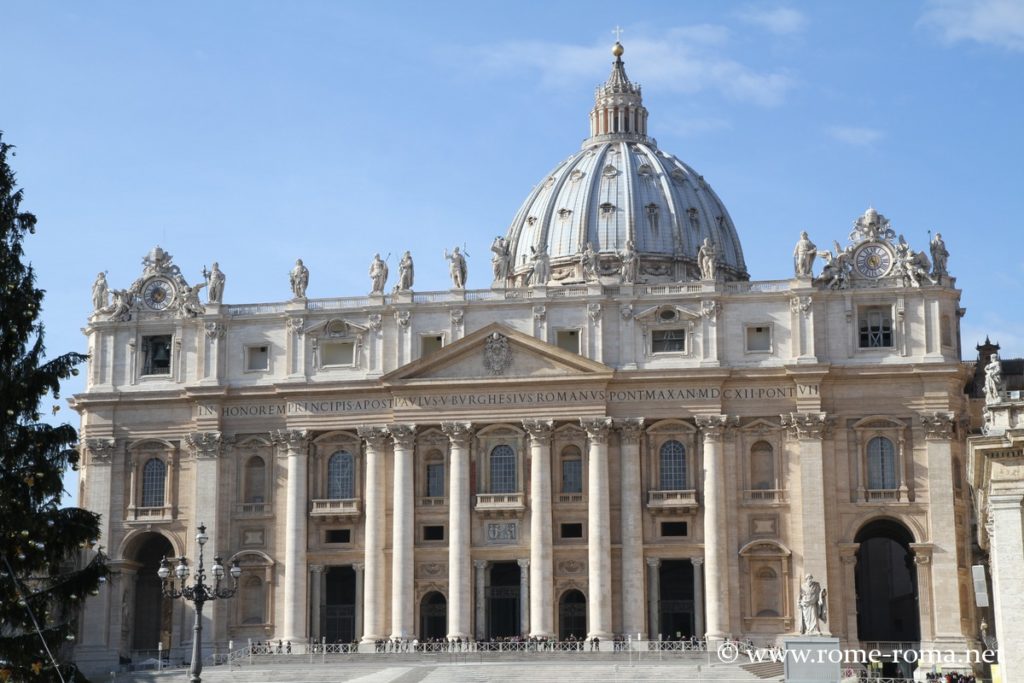 Discover the Saint-Pierre Basilica of Rome: visit, description and history. Built on the tomb of the apostle Peter which would date from the year 60, it became under Constantine, the incarnation ...
Discover the Saint-Pierre Basilica of Rome: visit, description and history. Built on the tomb of the apostle Peter which would date from the year 60, it became under Constantine, the incarnation ... - Basilica of Saint Mary Major in Rome
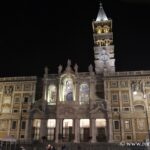 Discovery of the oldest church dedicated to the worship of the Virgin Mary in Rome. Information and times, visit and description of the Basilica of Santa Maria Maggiore, founded in ...
Discovery of the oldest church dedicated to the worship of the Virgin Mary in Rome. Information and times, visit and description of the Basilica of Santa Maria Maggiore, founded in ... - Archbasilica of Saint John Lateran
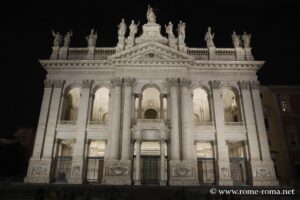 The Papal Basilica of St. John Lateran in Rome is the cathedral of the Pope as Bishop of Rome. Erected around the year 320, it is considered as the mother ...
The Papal Basilica of St. John Lateran in Rome is the cathedral of the Pope as Bishop of Rome. Erected around the year 320, it is considered as the mother ... - Basilica of Saint Paul Outside the Walls
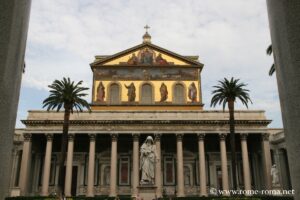 St. Paul’s Basilica outside the walls in Rome is one of the largest Christian basilicas in the world. Visit, description, schedule of the monument and its remarkable cloister.
St. Paul’s Basilica outside the walls in Rome is one of the largest Christian basilicas in the world. Visit, description, schedule of the monument and its remarkable cloister.

